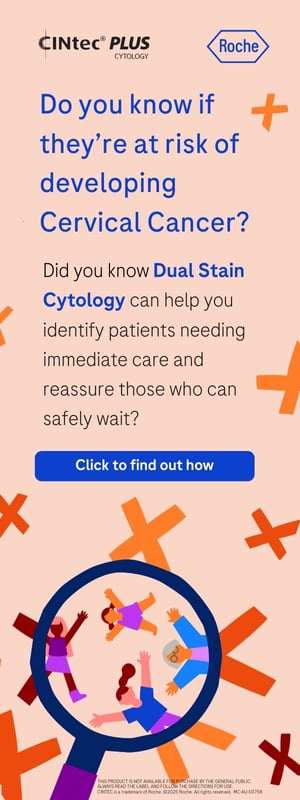Adolescence is a time of significant psychological, physiological and anatomical change. Exploring sexuality, a changing body image, the importance of peer acceptance and increasing desire for independence from parents can make this a very turbulent time. The normal, but dramatic, transformation in vulval appearance and physiology from that of a prepubertal girl to a adult woman can lead to undue distress and anxiety.
Menarche and the use of menstrual hygiene products; pubic hair growth and the various removal techniques for unwanted hair; and the onset of sexual activity with possible exposure to STIs, lubricants, semen and contraceptive products, such as latex condoms and spermicides, expand the possibilities for vulval and vaginal pathology enormously, but can be anticipated.
Diagnosis and management of disease is our primary objective as clinicians; however, should none be found after comprehensive examination and history (including exposure to potential irritants and allergens) a sensitive, informative gynaecological review can in itself be valuable in reassuring and educating adolescent patients and preventing unnecessary and potentially harmful future beliefs and interventions.
Prepubertal vulval examination notably reveals a reddish vaginal epithelium and hymen, thin short labia minora and an absence of labial fat pads and pubic hair on the labia majora. The vaginal epithelium is not oestrogenised and lacks glycogen and lactobacilli and has a more neutral or alkaline pH.
Exposure to endogenous oestrogen preceding the onset of menarche will lead to vaginal mucosa becoming a more pale pink colour and the occurrence of acidic (pH less than 4.5) vaginal secretions, secondary to natural desquamation of vaginal epithelial cells and the presence of lactobacilli in the vaginal flora metabolising the glycogen in the oestrogenised epithelial cells. This clear-to-white mucoid vaginal discharge may bleach the gusset of coloured underpants and cause concern. This physiologic discharge should not be itchy or malodourous. Young women may notice cyclical variations with the establishment of ovulatory menstrual cycles, which is good for them to know is normal.
Depending on the clinical presentation, acidic pH testing and microscopic examination of the discharge should reveal lactobacilli and normal vaginal epithelial cells. Negative testing for chlamydia and gonorrhoea, if historically appropriate, should confirm the diagnosis. Simple reassurance and explanation of physiology, in addition to education regarding simple healthy vulval hygiene measures (such as, regular bathing, avoiding vaginal douches, perfumed or strong soaps to clean the vulval area, wearing cotton underpants) will go a long way in achieving lifelong vulval health. The occasional use of panty liners or tampons midcycle if discharge is particularly heavy and problematic can be recommended. Aim to avoid pathologising physiological discharge and overtreatment with unnecessary antibiotic creams, pessaries and cervical diathermy.
Pubic hair development has traditionally been used to stage pubertal progression, but many girls are now undertaking hair-removal strategies well before achieving Tanner stage 5.1 The current fashion for extensive pubic hair removal can lead to significant vulval irritation. Depending on the method chosen and the technique in which it is attended, pubic hair removal can lead to thermal or chemical burns, atopic dermatitis, mechanical and infective folliculitis, cellulitis, auto-inoculation with herpes simplex virus, molluscum contagiosum or human papillomavirus, pigmentation and scarring.2 This can come as a great surprise to adolescents who may have a belief that hair removal is a necessary part of vulval hygiene and not personal choice. Suggesting a modification in grooming strategies, such as clipping hair rather than shaving, and improving technique if required (even simple advice regarding avoiding dry shaving or using a blunt razor, shaving with the direction of the hair and not sharing razors) can alleviate a great deal of suffering.3 Pubic hair removal additionally results in increased visibility of the vulva. Mobile phones with cameras can be used for greater self-examination and comparison and concerns with the appearance of the vulva (or more specifically, the labia) due to size, physiological pigmentation, the presence of papillae or sebaceous glands are not uncommon and can result in a great deal of emotional distress.
Limited exposure to the wide variation in normal adult vulval appearance by the general population and an abundance of accessible advertising for labial cosmetic procedures showing an idealised vulval appearance may exacerbate women’s vulval dissatisfaction and undermine body confidence. Adolescents may be particularly vulnerable to these factors, which are proposed to be contributing to an increase in requests for cosmetic vulval surgery and labial reduction surgery.4
A sensitively performed, confident examination, explanation and reassurance of vulval health and ‘normality’ from a gynaecologist may alleviate many girls’ concerns and be therapeutic. Directing them to more realistic representation of the wide variety of adult vulval appearances can also be helpful.5 An Australian website affiliated with Women’s Health Victoria, labialibrary.org.au, is a good adolescent-friendly option with a photo gallery. A sensitive and sensible, but nonmedical, blog labiaproject.com, is also quite good and has lots of pictures. For traditionalists, Femalia, edited by Joani Blank, is a famous collection of vulval photographs you may like to purchase for your bookshelf.
Vestibular papillomatosis is a descriptive term for the presence of multiple papillae 1–3mm of the epithelial lining of the inner surface of the labia minora that is the result of hormonal stimulation of puberty and common in the later stages of pregnancy.6 These papillae can be pigmented similarly to the patient’s general pigmentation. It is a variant of normal that is sometimes confused with multiple HPV lesions.7 8
The sebaceous glands on the inner aspect of the labia majora and both the medial and lateral aspects of the labia minora can vary in prominence, colour and number between individuals and be a cause of concern. Also known as Fordyce spots, their function is to secrete sebum to help lubricate and protect the genital skin.9 10 11
Lengthening and changes in pigmentation of the labia minora with pubertal progression may happen in an asymmetrical pattern over years, leading to distress and requests for surgical intervention. Reassurance that a degree of asymmetry is entirely normal and advice that time is likely all that is required to achieve greater symmetry should be given sensitively at first review.12
There is a wide variation in the size of normal labial minora and there are no agreed standards for normal labial width. UpToDate authors13 suggest a labial stretch width of greater than 6cm (measurement performed after gently extending the labia minora in the medial-lateral axis from the midline to the lateral free edge) as generally consistent with labial hypertrophy and should be accompanied by the presence of symptoms and or distress to make a clinical diagnosis of labial hypertrophy.
Girls requesting surgery, as well as their parent/guardian(s) should be advised of the role of the labia in enclosing and protecting the vagina and urethral orifice and the significant contribution of the highly innervated labia minora in the female sexual pleasure response, in addition to the possible risks of labial reduction surgery, including infection, wound dehiscence, scarring, chronic vulval pain, loss of sexual sensation, dyspareunia and, ironically, dissatisfaction with the postsurgical cosmetic appearance.14 15 Cosmetic labial surgery in adolescents is best delayed until completion of pubertal development to minimise risks of a poor long-term cosmetic result and structural problems with continued labial development, as this is associated with an increased likelihood of revision procedures and the increased risks of scarring, pain or lack of sensation.16 17
A conservative approach – with education, simple measures to alleviate any reported vulval discomfort and psychological assessment and screening for body dysmorphic disorder or other factors that could be contributing to the level of distress and their management – is recommended by both the British Paediatric and Adolescent Gynaecological Society that recommends deferring surgery until at least 18 years of age18 and the North American Paediatric and Adolescent Gynaecological society that are less prescriptive in minimum age limits, but generally recommend girls be at least 15 or 16 years of age.19 20
In summary
- Listen carefully to symptoms and concerns and recognise anxiety
- Be thorough in your history and examination (don’t forget to examine the whole patient, not just the vulva, for helpful clues to diagnose dermatological complaints)
- Diagnose and treat pathology. Refer if unsure
- Remember to educate regarding the general principles of vulval care
- Don’t be afraid to reassure and label normal what you know to be normal. You are the expert and reassurance of normality can be therapeutic and help to build a positive vulval body image at the beginning of their reproductive life and hopefully future psychological and sexual wellness
References
- Marshall WA, Tanner JM. Variations in pattern of pubertal changes in girls. Arch Dis Child. 1969;44(235):291-303.
- Emans, Laufer, Goldstein. Paediatric and Adolescent Gynaecology 6th ed. Lippincott Williams and Wilkins. 2012. Chapter 5, Vulval dermatology, p.60-99.
- Fischer G, Bradford J. The Vulva: A Clinician’s Practical Handbook: Family Planning NSW; 2010.
- Committee Opinion No.662: Breast and Labial Surgery in Adolescents. Obstet Gynaecol. 2016;127:e138.
- Emans, Laufer, Goldstein. Paediatric and Adolescent Gynaecology 6th ed. Lippincott Williams and Wilkins. 2012. Chapter 5, Vulval dermatology, p.60-99.
- Fischer G, Bradford J. The Vulva: A Clinician’s Practical Handbook: Family Planning NSW; 2010.
- Emans, Laufer, Goldstein. Paediatric and Adolescent Gynaecology 6th ed. Lippincott Williams and Wilkins. 2012. Chapter 5, Vulval dermatology, p.60-99.
- Fischer G, Bradford J. The Vulva: A Clinician’s Practical Handbook: Family Planning NSW; 2010.
- Leibowitch, Staughton, Neill, Barton, Marwood. An Atlas of Vulval Disease: A combined Dermatological, Gynaecological and Venereological approach: Martin Dunitz Ltd; 1995.Chapter 3: Commonly observed non pathological lesions, p.13-17.
- British Society for Paediatric and Adolescent Gynaecology.
- Laufer M, Reddy J. Labia Minora Hypertrophy. June 2017. Available from: www.uptodate.com/contents/labiaminora-hypertrophy.
- British Society for Paediatric and Adolescent Gynaecology.
- Lloyd J, Crouch NS, Minto CL, et al. Female genital appearance; ‘normality’ unfolds. BJOG. 2005;112:643-46.
- British Society for Paediatric and Adolescent Gynaecology.
- Lloyd J, Crouch NS, Minto CL, et al. Female genital appearance; ‘normality’ unfolds. BJOG. 2005;112:643-46.
- British Society for Paediatric and Adolescent Gynaecology.
- Committee Opinion No.662: Breast and Labial Surgery in Adolescents. Obstet Gynaecol. 2016;127:e138.
- Lloyd J, Crouch NS, Minto CL, et al. Female genital appearance; ‘normality’ unfolds. BJOG. 2005;112:643-46.






Leave a Reply